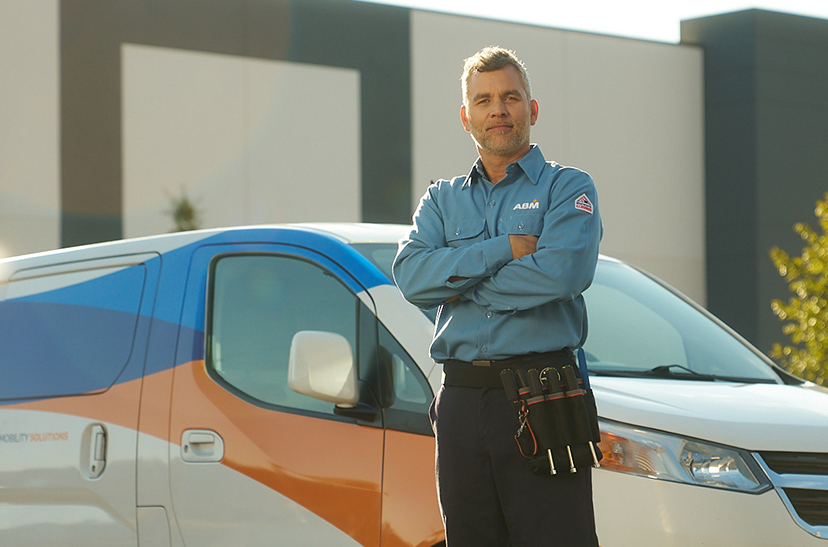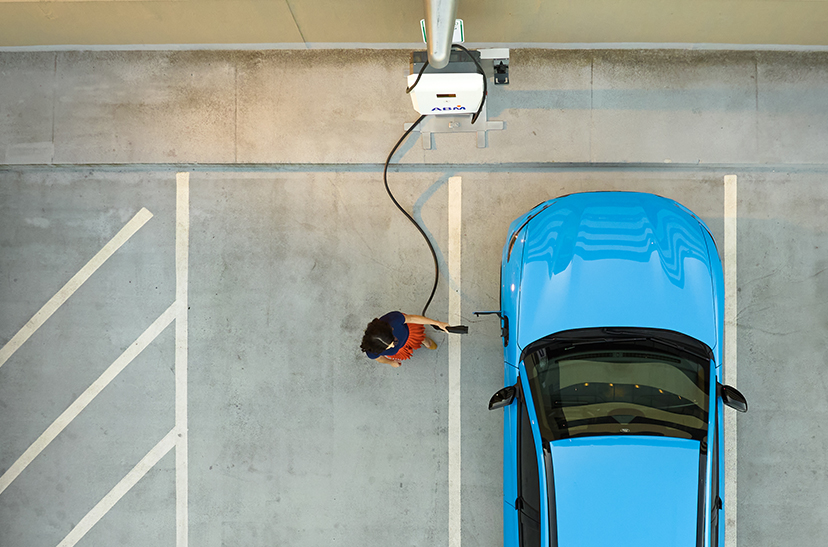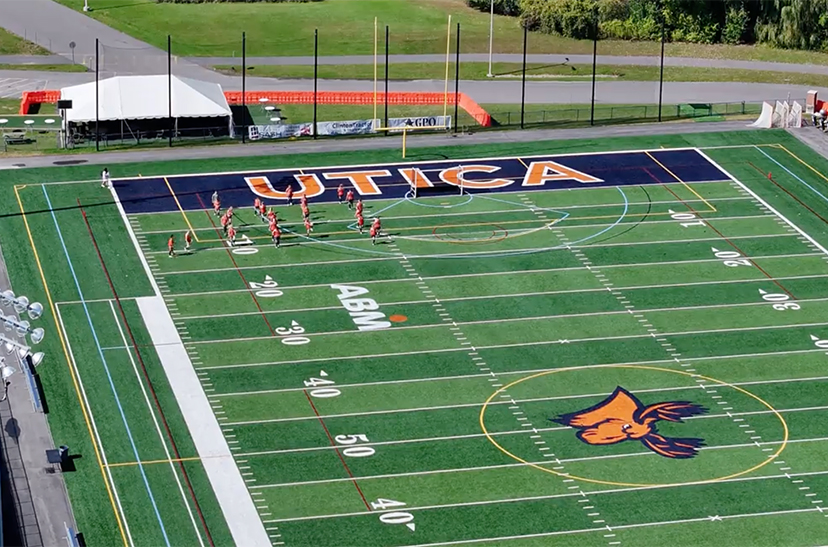UV Technologies for Air and Surface Disinfection
ULTRAVIOLET TECHNOLOGIES FOR AIR AND SURFACE DISINFECTION
Background
As facilities continue to reopen and maintain operations during COVID-19 pandemic conditions, facility professionals must be equipped with sound information and vetted recommendations regarding an array of effective technologies for air and surface disinfection. Ultraviolet (“UV”) light technologies are not new, but the options of applications are numerous and sometimes a challenge to organize and understand. This white paper regarding UV technologies is a summary to equip you with an understanding of the science, safety, and the potential best solutions for your facilities.
More than a century ago, the first research findings were released demonstrating that direct sunlight is quickly fatal to most bacteria, while diffused light was less harmful. These discoveries paved the way for more research into understanding the UV portion of the electromagnetic spectrum and its potential uses as a germicidal intervention. Since that time, UV has been recognized as beneficial in reducing environmental pathogens as well as protecting healthcare patients and building occupants from contaminated air, surfaces, and water. Recently, extensive work has been done to understand the fuller spectrum of ultraviolet light and applying those findings in the indoor environment.
There are currently four categories of technologies that may be considered for UV disinfection solutions:
- Installed Lighting
- HVAC Systems
- Upper Room Systems
- Mobile Systems
UV light delivered through installed lighting, HVAC systems, upper room systems, and mobile systems have enabled great strides in environmental disinfection that augments standard cleaning and disinfection practices. Today, our knowledge of how to inactivate microorganisms with UV light has improved significantly, and the Centers for Disease Control and Prevention (CDC) has recognized UV-C (sometimes referred to as UVGI or Ultraviolet Germicidal Irradiation) as effective for water, air, and surface treatments. Traditional cleaning and disinfection practices involve mechanical removal of soil followed by physical application of a germicide. The use of UV has resulted in a non-chemical, ‘no-touch’ step following cleaning in environmental disinfection programs.
Please note, however, that UV technology does have some limitations and facilities with UV technology installed will still require proper cleaning to reduce pathogen spread. If the organism is somehow protected from UV (for instance by heavy surface soil), this may alter its ability to withstand the effects of the UV exposure. Additional environmental factors that influence the germicidal effectiveness include air mixing, intensity and duration of exposure to the UV source, reflectivity of surfaces, environmental humidity, and the pathogen’s sensitivity to UV (photo-reactivity).
HOW DOES UV-C WORK AS A GERMICIDE?
While the germicidal effectiveness of UV-C light depends upon a number of factors, the three primary factors directly associated with the technology are:
1. The wavelength of the UV-C
2. The length of time the microorganism is exposed to UV-C, and
3. The intensity of the UV-C
FACTOR #1: WAVELENGTH
Ultraviolet is a part of the light spectrum with wavelengths from 10 nanometers (nm) to 400 nm. The shorter the wavelength, the more lethal it is to the genetic building blocks of the pathogen’s cells. UV light between 100-400 nm is divided into three ranges.
- UV-C at 100-280mm
- UV-B at 280-315mm
- UV-A at 315-400mm
Only UV-C radiation between 200-280 nm is absorbed by the genetic building blocks of the pathogen’s cells and results in disruption of the cell’s ability to reproduce and ultimately cause cell death. Therefore, only UV-C is considered germicidal. Longer wavelengths such as UV-A and UV-B are not considered germicidal and are not typically capable of inactivating or killing a broad spectrum of bacteria, fungi, or viruses.
Other names are also applied to UV-C radiation. Far-UV radiation is between 207-222 nm and has recently been shown to be efficient in inactivating airborne viruses without hazard to the eyes or skin, lending yet another approach to environmental disinfection.
FACTOR #2: CONTACT TIME
DOSE = CONTACT TIME + INTENSITY
When delivering UV-C to irradiate pathogens, a “contact time” is required, similar to that of a disinfectant solution. This is referred to as DOSE. Dose is how much energy is required to disinfect or eliminate a certain pathogen. Several studies exist today that educate us about the number of required photons that should be delivered to organisms to irradiate them.
FACTOR #3: INTENSITY
The intensity, as part of the dose of the UV-C, is defined as the amount of light that reaches the surface, is impacted by how close the light source actually is to the surface undergoing disinfection. Therefore, the further away from the source, the less intensity is present. Also, if the area to be disinfected is covered, shielded, or otherwise out of direct contact with the UV-C light source, the intensity is also reduced. Reflective surfaces assist with delivering the greatest possible intensity to germs, but also create hazards to occupants if the reflected UV-C light exposes skin or eyes.
IS UV SAFE FOR HUMANS?
Most wavelengths of ultraviolet light have been found to be damaging to human tissue. Examples of this include skin tanning when exposed to UV-A and sunburn when exposed to UV-B. Some tissue damage to the eyes, such as photokeratitis, corneal damage, cataracts, and macular degeneration can result from most UV exposure. Due to the lack of germicidal effectiveness, UV-A and UV-B are not used as part of environmental disinfection or infection control interventions. UV-C in the range of 231-280nm must be shielded from humans as it poses potential cancer safety risks to the skin and damage to the eyes. Continuous low doses of Far UV-C (200-222 nm) have been studied and no adverse human effects reported. While some wavelengths are proving to be less harmful to the skin and eyes (e.g. Far- UV), just like sunlight, excessive and unprotected exposure to UV radiation should be minimized or eliminated according to its potential hazards. Safety engineering controls should be employed within the technologies that we support as a primary and priority consideration.
What are the use cases for recommended UV-C and alternate technologies?
CATEGORY 1: INSTALLED UV LIGHTING
Installed UV-C or UVGI lighting technologies have been available for many years, but they carry important safety limitations in preventing any direct exposure to human skin and eyes.
Points to focus on when considering these technologies include:
- Systems must be equipped with safety measures such as motion sensor on/off systems and physical barriers to prevent all UV-C exposure to humans that may occupy the space.
- Careful review of the manufacturer testing studies should verify if the proper safety features have been engineered into and not just added on to the technology.
- Do not rely solely on administrative controls such as worker training and temporary barriers to prevent exposure since these can be bypassed by facility occupants.
Installed Far-UV lighting technologies are newer to the market and, according to recent research2, they hold promise for delivering germicidal efficacy without harming human skin or eyes with minimized exposures controlled by engineered safety features. Far-UV lighting is equipped with a 222-nanometer light source to inactivate microbes. Inactivation depends on the type of microbe, distance from the source, and duration of exposure (as most UV technologies require). The improved safety at this wavelength may be especially useful in downlighting. As a result of all these factors, we need to focus on these considerations:
- Proper installation and programming of the Far-UV lighting requires critical knowledge of the room contents, use and occupant patterns.
- Limiting the duration of exposure to only the time allowed per the manufacturer, rather than continuous operation, should be achieved in the programming of the technology during installation.
- Until this technology becomes more commonplace, limiting the duration of exposure with extra safety measures is prudent.
- Additional filtration (color filters) of unwanted wavelengths should also be added as a precaution, especially for clients requesting longer than typical operation times.
CATEGORY 2: HVAC UV-C SYSTEMS
HVAC UV-C light fixtures installed in plenums are typically designed as HVAC air cleaner systems and are directed at drain pans and cooling coils to address potential pathogen sources. To better address recirculated air in facility disinfection and not just the HVAC sources, more technologies are offering "360 degree" application so that the overall airborne germicidal efficacy is improved.
As this technology is evaluated, the following points should be considered:
- Ensure systems have 360° application of UV-C light for the best germicidal outcomes.
- The important factors (contact time and intensity) must be addressed in delivering an effective dose of UV-C radiation, so fixtures must be mounted in careful configurations.
- Account for pass-by, UV-C air disinfection, and/or irradiation of cooling coils and drain pans.
- Consider that these individual HVAC UV-C air purifiers can be mounted to plenum walls or configured so multiple fixtures can mount to frame assemblies that address supply ducts or cooling coils.
Needlepoint bipolar ionization (NPBI) technology is not an ultraviolet technology but instead offers an alternative HVAC disinfection system other than UV-C. NPBI uses an electronic charge to create a high concentration of positive and negative ions in a plasma field that is highly electrically conductive. The plasma field filled with positive and negative ions flows with the air and attaches to particles including microorganisms and gases. These ions attach to sub-micron particles and attract other particles resulting in a larger collection that can be filtered. In addition, as the ions attach to organisms in the air, they pull away hydrogen resulting in death of the microbe. lons in the plasma field travel with the air and travel into spaces, even those that are shadowed or unseen. Other reported benefits of NPBI include management of odors and improved overall indoor air quality. When considering using NPBI alone or in addition to UV-C technologies the following should be considered:
- The advantages NPBI has over UV-C in HVAC systems is its ability to address a broader spectrum of airborne contaminants including particulates, odors, and volatile organic compounds.
- NPBI does not carry the eye and skin exposure safety concerns of UV-C radiation.
- Just as for HVAC UV-C systems, NPBI must be mounted in careful configurations so that adequate contact time is delivered for optimum performance.
- Some NPBI technologies create ozone. Only technologies that have been vetted as not creating ozone should be deployed.
CATEGORY 3: UPPER ROOM UV-C SYSTEMS
Upper Room UV-C treatment fixtures are designed specifically for continuous upper air UV-C irradiation that helps decontaminate the environment around the occupant by operating above the occupant. These fixtures have been successfully used to control the spread of airborne microorganisms and bio-aerosols in hospitals, prisons, clinics, and government buildings for over 60 years. The fixtures incorporate adjustable louvers that safely direct UV-C energy above contact level (7+ feet) with occupants, ensuring the fixture disinfects the air in both occupied and unoccupied rooms.
As a result of these safety and technology factors the following should be considered:
- Ensure adequate ventilation or air mixing is present since the fixture is dependent on pathogens reaching the upper portion of the space.
- Careful installation is required to ensure the louvers or other mechanisms for directing the UV-C light are well above head level for the safety of all potential occupants.
CATEGORY 4: MOBILE SYSTEMS
The use of UV-C or UV-GI mobile devices also requires specialized training. UV shielding must be in place between the UV energy source and the operator, as well as physical barriers in place to prevent facility occupants from entering the room while the device is operational. Safety equipment and actions that protect the eyes and skin must be used to prevent human exposure to the radiation.
"No-touch" (automated) mobile UV-C devices have been shown to reduce bacterial contamination of surfaces after manual cleaning.
Most UV-C mobile disinfection devices use one of the following UV-C sources:
- Germicidal low-pressure mercury lamps that emit energy within the highest range of I of bacterial efficacy (200-280 nm),
- Pulse xenon that emits high intensity, pulses of UV-C light that cover the entire germicidal spectrum (210-280 nm),
- Far-UV, which operates at an even shorter lethal wavelength, and is considered a rapidly emerging technology in lighting applications.
Sub-set of Mobile UV-C Systems: Moveable Towers
Many of these UV-C devices require multiple placements within an enclosed room or area and additional man hours to move the device between disinfection cycles. In some cases, devices must be moved multiple times to completely disinfect a room as the areas to be disinfected must be within line of sight for a specified amount of time for surfaces to be completely disinfected.
Therefore, when considering moveable towers, the impact on workload and workflow must be considered in addition to the attributes of devices.
Points to focus on when considering moveable towers include:
- Mobility of the device to overcome shielding or shading of areas targeted for disinfection.
- Smart technologies that sense when the dose cycle is complete and a movement pathway that can be designed for the targeted space.
- Validation studies that demonstrate performance outcomes of the individual device.
- Feasibility of device use within the targeted space(s).
Sub-set of Mobile UV-C Systems: Cabinet and Counter-top Devices
These UV-C devices require the surfaces of small items, such as phones, keys, tablets, and keyboards, to be wiped clean prior to placement in the UV-C device before a UV-C dose is employed. Use of the device must meet the wavelength, contact time, and intensity factor requirements. These devices are not currently reviewed or regulated by federal agencies, and well-designed studies that demonstrate their effectiveness are largely nonexistent.
When evaluating use of these types of mobile devices, consider the following:
- Composition material of the item: Some items such as glass and ceramic are not adversely impacted by UV-C while others, such as plastics and other polymers, will experience damage with repeated exposure. With too much exposure, these materials can fade color, lose strength, and become less flexible.
- Ability of the items to have all surfaces exposed to the UV-C light: For example, UV-C light boxes that enable placement of a device inside or on a moveable conveyor may enable exposure of flat surfaces but not areas that are shielded as it presents on curves, inside seams, and button crevices. Covers that serve to protect the items, such as cell phone covers, prevent exposure to the light and would need to be removed prior to placement into the UV-C cabinet or otherwise exposed to the UV-C light.
- Validation studies that demonstrate the amount of time needed for item exposure to UV-C by the individual device.
WHAT TYPES OF DISINFECTION TECHNOLOGIES DO WE RECOMMEND TO CLIENTS?
To balance the critical need for air and surface disinfection with safety considerations of the UV technologies, certain products have been vetted. Below is a summary of the 4 categories of technologies that ABM supports following preliminary technical and safety reviews:
What types of mobile UV devices are NOT currently recommended to clients?
- Wand and other handheld devices
- Wand devices are marketed for "ease of use" on surfaces such as desktops and phones. A major challenge for these devices is the inability of the light source to emit the UV intensity and sufficiently high doses necessary for disinfection. Current technologies have limited the ability to develop devices that can achieve demonstrated disinfection performance. Therefore, ABM does not currently recommended them.
Ensure Safer, Healthier Spaces
RESTORE CONFIDENCE BY ENSURING HEALTHY AIR INDOORS
Chances are you took re-opening your facilities mid-pandemic seriously. You likely have ongoing plans that include protocols for cleaning, surface disinfection, social distancing, hand hygiene, and more. However, mounting research suggests that COVID-19 droplets may remain in the air and could be a primary source of transmission². Have you put measures in place to reduce the spread of pathogens in the air? ABM's Enhanced Facility™ program can help.
ABM's EnhancedFacility program provides facility services and solutions focused on improving indoor air quality (IAQ) to foster better occupant wellbeing through improved building health, safety, and efficiency. We can help you implement effective strategies you need to improve IAQ to help reduce viral transmission.
How EnhancedFacility Works
STEP 1. Assess the safety of your facility
- HEALTHY BUILDING RISK ASSESSMENT
- Risk Assessment tool
- HVAC inspectionTurnkey financial solutions
STEP 2. Optimize building operations
- HVAC SYSTEM OPTIMIZATION (Methods for improving IAQ and overall building health)
- Ventilation and humidity control
- Proper filtration
- HVAC disinfecting technologies
- Building controls
- DISINFECTING LIGHTING SOLUTIONS
- Enables continuous disinfection of air contaminants.
- TOUCHLESS FIXTURES AND DOORS
- Reduces the number of high-touch surfaces within a facility.
STEP 3. Add resiliency for total building health
- ELECTRICAL PREVENTATIVE MAINTENANCE
- Mitigates life and safety risk, reduces downtime and increases reliability the safety of your facility Assess
- ENERGY EFFICIENCY UPGRADES
- Reduces operating costs to move funding into other facility improvements.
- HVAC PREVENTATIVE MAINTENANCE
- Promotes optimum filtration and disinfection
- Saves energy
- Prevents unnecessary repairs
- Extends the life of your system
ENHANCED Facility
Our Expert Risk Assessment and Control Banding Process
Using our proprietary Healthy Building Risk Banding Tool developed alongside our Expert Advisory Council, we can assess and identify IAQ challenges and recommend effective and cost-efficient solutions.
- First, your facility's exposure risk is categorized. Using our proprietary Healthy Building Risk Banding Tool, your facility's overall risk level is identified (low to very high).
- Then, the highest priorities to each facility are identified. The most important and effective strategies for your facility's specific risk level are determined.
- Lastly, targeted solutions based on risk level are developed for maintenance, lighting and HVAC systems. A report of fact-based recommendations help you form a comprehensive strategy for reopening and operating more safely.
Healthier Facilities, Healthier Occupants
There are several new and advanced technologies for biohazard disinfection of the air and surfaces that may be effective depending on the unique needs of the facility, including Needlepoint Bipolar lonization technology within HVAC systems, Dry Hydrogen Peroxide generation, and Far-UV and UV-C lighting technologies. These specific recommendations help prioritize budgets to focus on actions that will make the most impact.
ABM can also help with funding options. We have access to public and private loan programs which could be paid for by savings realized with a Professional Service Agreement (PSA).
EnhancedFacility complements the cleaning and disinfection offered in EnhancedClean™ (visit EnhancedClean.com for more). Together, they help reduce viral transmission on surfaces and in the air. Additional services like the installation of touchless fixtures and doors will also lower your facility's risk. These programs foster greater occupant trust and confidence regarding your commitment to their health and safety, during the pandemic and beyond.
LET'S STAY HEALTHY TOGETHER.





